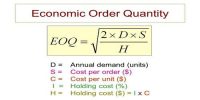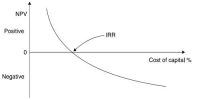Weighted Marginal Cost of Capital
The marginal cost of capital is the weighted average cost of new capital calculated by using the marginal weights. The marginal cost of capital is calculated as being the cost of the last dollar of capital raised. Generally, we see that as more capital is raised, the marginal cost of capital rises. This happens due to the fact that the marginal cost of capital generally is the weighted average of the cost of raising the last dollar of capital. It is the composite rate of return required by shareholders and debt-holders for financing new investments of the company. The marginal weights represent the proportion of various sources of funds to be employed in raising additional funds. Usually, we see that in raising extra capital, firms will try to stick to the desired capital structure. Usually, once sources are depleted they will have to issue more equity. Since the cost of issuing extra equity seems to be higher than other costs of financing, we see an increase in the marginal cost of capital as the amounts of capital raised grow higher.
The marginal cost of capital can also be discussed as the minimum acceptable rate of return or hurdle rate. The investment in capital is logically only a good decision if the return on the capital is greater than its cost. Also, a negative return is generally undesirable. As a result, the marginal cost of capital often becomes a benchmark number in the decision making a process that goes into raising more capital. If it is determined that the dollars invested in raising this extra capital could be allocated toward a greater or safer return if used differently, according to the firm, then they will be directed elsewhere. For this, we must look into marginal returns of capital, which can be described as the gains or returns to be had by raising that last dollar of capital.














